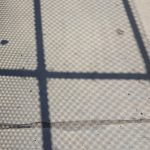In this project, we’re going to be designing, developing, and trying out ways for people to materialize, visualize, share, or otherwise externalize their own experiences of mental health, and other emotional aspects of our current technological, political, and social contexts. Back to project overview.
The aim is to end up with (by the end of the course):
- an interactive set of methods and tools—using technology where appropriate, but also lower-tech methods—that can be used for public engagement or participatory design activities
- with examples of ‘materializations’ produced by real people, that can be exhibited
- documentation of our process that can form the basis of subsequent academic publications
We’ll be working in three groups, mixing students from different backgrounds. Each group will address or focus on a particular framing of aspects of mental health, to be defined by the group, but ideally we will address anxiety in a few different forms, because I have pre-emptively submitted the idea for the project to this Science Gallery open call! Or, many other framings, topics, and overlaps are possible; one of the issues with discussing mental health issues can be the difficulty of disentangling what dimensions are involved, from the experiential perspective of people involved.
What are the research questions?
- How can methods from design and related creative research areas be applied in enabling and engaging people (specifically: members of the Carnegie Mellon community) to materialize, visualize, or otherwise make palpable or externalize their own experiences of mental health?
- What can we learn from the ways in which people make use of these tools, to provide insights and opportunities for further development and application in other areas and with other participants?
If you’re used to more quantitative, positivist research methods in the sciences—including social sciences—these kinds of research questions might seem vague or hard to answer. In common with much research through design, these are essentially constructivist questions: not seeking to find “the” answer, or prove “the truth”, but to find ways of characterizing and framing phenomena through constructing our knowledge, including through proposing new ways of doing things or approaching issues, in order to explore people’s reactions and responses. The framing of the questions as “how…?” and “what…?” effectively makes our projects, and the insights we derive, answers to the research questions.
Ethics
This is not a medical study in any way. We are not interested in diagnosing or making any particular assessment of any individual person or group’s mental health. The goal is to develop tools that help people explore, reflect on, and share their own thinking, feelings, and experiences, and which can prompt discussion with others, but it’s important to remember that in this project we are not going so far as to even consider attempting to use the tools we develop for any actual form of diagnosis. This might be an aim in the future if some of the methods were developed further in collaboration with medical professionals and with substantial ongoing engagement with institutional review boards, but it isn’t the point of this project. The tools and methods we design and develop here might be more appropriately applied as part of a participatory design process with people, for example to help in redesigning ways of providing (non-clinical) support.
The student body at Carnegie Mellon, in common with many people living and working in high-pressure situations, experiences a range of issues. As an open, non-clinical, community of interest, to engage in participating in trying out the tools and methods we develop, the student body provides a suitable pool of participants, but it should be clear that we are not going to be doing “human subject research” in the way it might be approached in other kinds of project. We are aiming to do research about the possibilities of the tools and methods, not about people themselves.
Final deliverables
There’ll be more specific formatting details nearer the time, depending on how each project evolves, but the aim is that each group should deliver:
- Methods / tools, exhibited in Week 8 (Thursday October 18th) together with a presentation. Including examples of ‘materializations’ produced by people trying out the methods (60%)
- Blog post(s) documenting your process, in a format that can be a basis for subsequent academic publications as a group (40%). Due by October 22nd to enable inclusion of final presentation materials
Project milestones
See also the schedule.
For Week 3 (Thursday September 13th):
- Have developed an idea sufficiently to be able to map out your own experiences individually or in pairs using a rough prototype you’ve created
For Week 6 (Thursday October 4th):
- Start to prepare blog posts / shareable (online and physically) content ready for Oct 10th (World Mental Health Day)
For Week 7 (Thursday October 11th):
- Start to prepare exhibition / demonstrations
For Week 8 (Thursday October 18th):
- Group presentations, exhibition / demos
- Finalize documentation / blog posts by October 22nd





